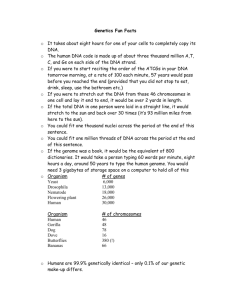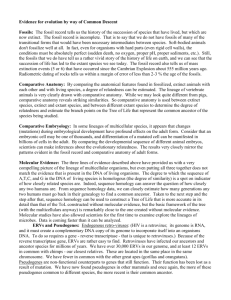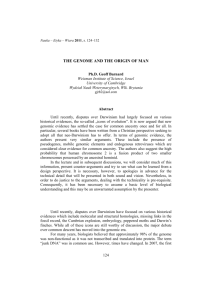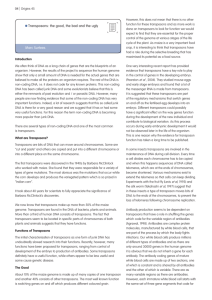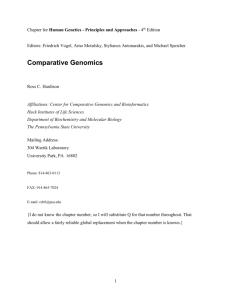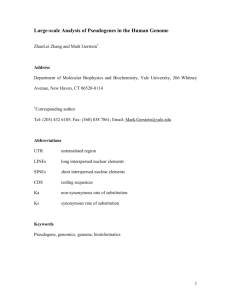This examination paper consists of 4 pages
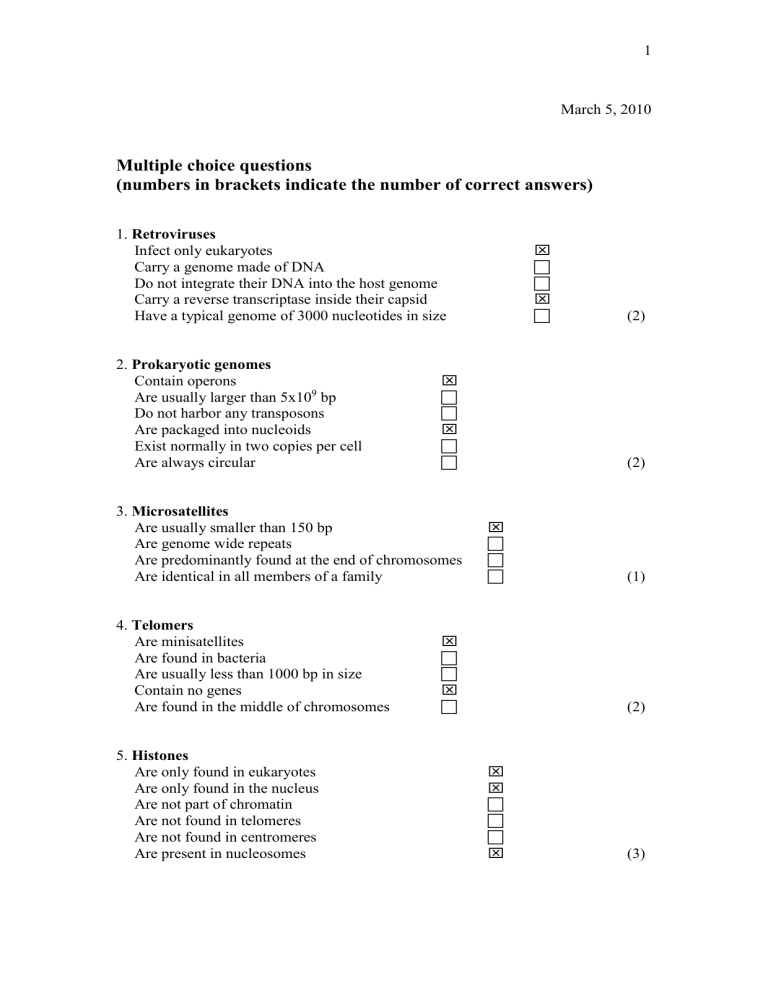
1
March 5, 2010
Multiple choice questions
(numbers in brackets indicate the number of correct answers)
1. Retroviruses
Infect only eukaryotes
Carry a genome made of DNA
Do not integrate their DNA into the host genome
Carry a reverse transcriptase inside their capsid
Have a typical genome of 3000 nucleotides in size
2.
Prokaryotic genomes
Contain operons
Are usually larger than 5x10 9 bp
Do not harbor any transposons
Are packaged into nucleoids
Exist normally in two copies per cell
Are always circular
3. Microsatellites
Are usually smaller than 150 bp
Are genome wide repeats
Are predominantly found at the end of chromosomes
Are identical in all members of a family
4. Telomers
Are minisatellites
Are found in bacteria
Are usually less than 1000 bp in size
Contain no genes
Are found in the middle of chromosomes
5. Histones
Are only found in eukaryotes
Are only found in the nucleus
Are not part of chromatin
Are not found in telomeres
Are not found in centromeres
Are present in nucleosomes
(2)
(2)
(1)
(2)
(3)
2
6. Pseudogenes
Are nonfunctional genes
Are expressed genes
Are incomplete genes
Are only found in eukaryotes
Cannot be identified by computers
7. LTR elements
Occur in DNA
Are found in bacteria
Are also called "long interspersed nuclear elements (LINEs)"
Contain a reverse transcriptase gene
Contain a poly(A) tail
8. Reporter genes
Indicate the presence of stress conditions
Are used to characterize proteomes
Are all of bacterial origin
Are used to delineate regulatory sequence elements
Can often be detected by histochemical assays
9. Chain termination DNA sequencing
Requires dideoxynucleotides
Requires deoxynucleotides
Requires an RNA polymerase
Requires double-stranded DNA
Requires dimethylsulfate
10. The following elements contain tandemly repeated DNA
Minisatellites
Long terminal repeats (LTRs)
Microsatellites
Pseudogenes
Telomers
Long interspersed nuclear elements (LINEs)
Short interspersed nuclear elements (SINEs)
DNA transposons
Centromeres
11. Phage display
Is used to analyze transcriptomes
Can identify protein-protein interactions
Can identify protein-DNA interactions
Requires a clone library
(2)
(2)
(2)
(2)
(4)
(2)
3
12. Polypeptides
Can fold into a double helix
Can have a tertiary structure
Can contain phosphate
Can contain sulfur
Consist of nucleotides
Are synthesized in the nucleus
13. Components of nucleic acids are
Ribonuclease
Phosphate
Sucrose
Nucleoids
Adenine
Thymine
Glycerol
Deoxyribose
Uracil
14. cDNA
Is made from ribosomal RNA
Is made from tRNA
Is made from mRNA
Contains only introns
Contains only exons
Is single-stranded
15. ORF scanning
Is used to find exons
Is used to find intergenic sequences
Is used to find gene homologies
Is used to find genes
16. The human genome
Is the largest genome known to date was the first completely sequenced genome
Contains more than 40,000 genes
Is divided into 24 chromosomes
17. Operons
Occur only in bacterial genomes
Contain more than one gene
Contain more than one promoter
Were discovered in the 19th century
Contain long intergenic sequences
(2)
(5)
(2)
(1)
(1)
(2)
4
18. Centromeres
Contain satellite DNA
Contain many tightly packed genes
Are found in bacterial chromosomes
Function in DNA replication
Contain no histones
Occur only in eukaryotes
Are always located in the middle of chromosomes
19. Most sequences in the human genome belong to
Genes
Pseudogenes
Gene fragments
Tandem repeats
Interspersed repeats
20. Expressed sequence tags (ESTs)
Are random genomic sequences
Are usually smaller than 50 bp
Are cDNA sequences
Can be used as genome markers
Are attached to repeat sequences
21. Tandemly repeated DNA
Can be minisatellites
Can be retroelements
Can be transposons
Can be used as DNA marker
Total: (44)
Mark Correct answers
A 40-44
B 34-39
C
D
E
F
27-33
22-26
17-21
<17
(2)
(1)
(2)
(2)






